Located in a spacious setting of lush trees and diversified species of flowers, the ancient church named Hanh Thong Tay is a haven away from the bustling life in the largest urban centre in Vietnam.
Hanh Thong Tay Church is situated at No.53/7 on Quang Trung Street, Ward 11, Go Vap District, Ho Chi Minh City. Unlike most of the churches in Vietnam which were designed according to the Gothic or Romanesque architectural styles, this church has the Byzantine architecture with two overwhelming colours of white and grey that bring the church a gentle and elegant beauty. One of the distinctive features of Byzantine architecture is clearly seen through a round tower with its dome resembling the hollow upper half of a sphere. Above the dome is a pyramid tower for letting in light. The walls outside the church are simply decorated with edges and plaster relievo and patterns. In the church’s bell tower, there is a set of three bells of three different sounds which were cast in 1925 by Paccard, a famous bell manufacturer in Annecy, France. The lower part of the bell tower was built with large rocks.

Hanh Thong Tay Church is a rare design in the Byzantine architectural style.
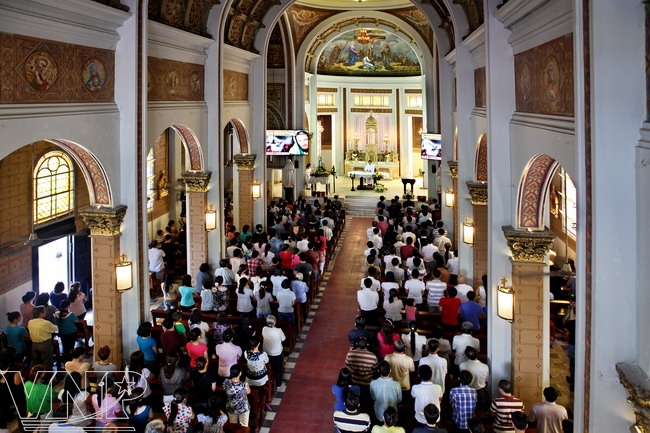
A religious ceremony on Sunday in Hanh Thong Tay Church.
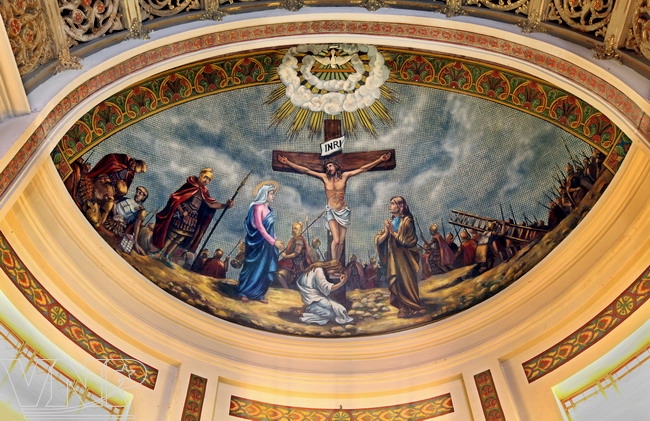
A ưall painting about Giesu who is giving his last will near Mother Maria and St Gioan.
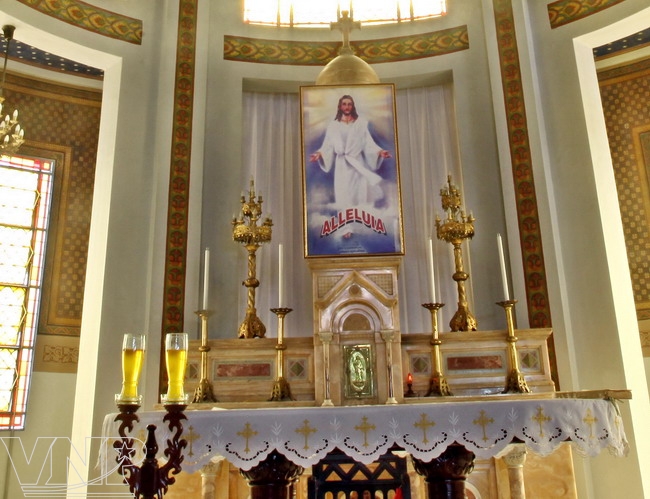
One of three alters in the chancel.
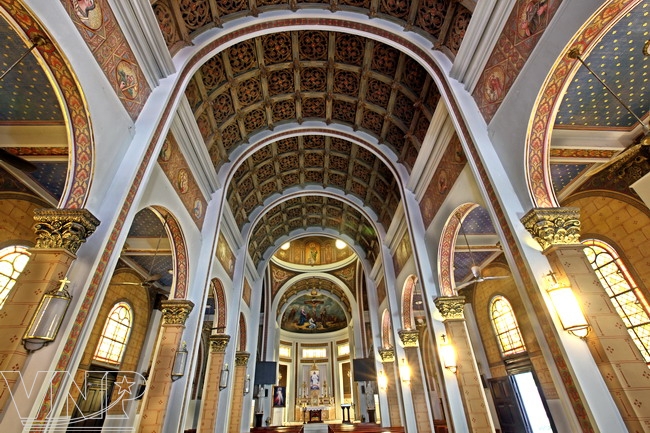
A system of domes and delicate patterns inside the church.
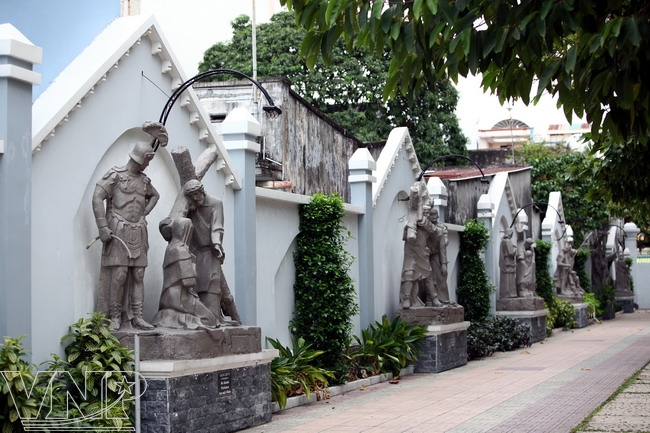
Statues depict stories in the Bible in the church.
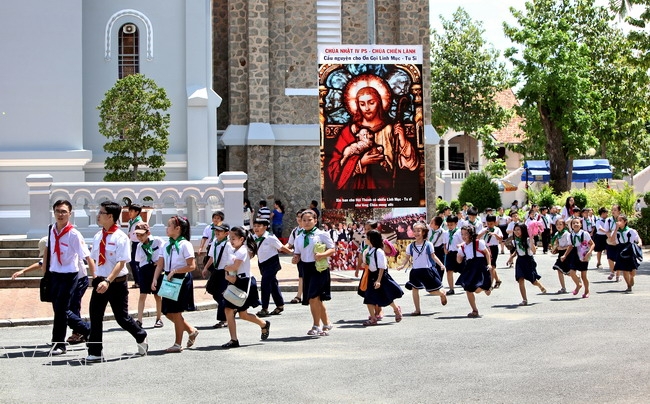
In the yard of the church on Sunday. |
Like Byzantine churches, Hanh Thong Tay Church is lavish with sparkly mosaics and sophisticated details on the inside but plain on the outside. The church is characterized especially by massive domes with square bases and round arches and spires and much use of glass mosaics. The walls inside the church are sheeted internally with marble, vaults and domes with colour glass mosaic and pictures on a golden background. Notably, three alters in the chancel were skillfully carved from golden marble from Italy and on the walls and ceilings are many mosaics, including one about Giesu who is giving his last will near Mother Maria and St Gioan.
The church was built from 1921 to 1924 by two contractors of Baader and Lamorte from France. The work’s investor is Le Phat An, maternal uncle of Queen Nam Phuong (wife of King Bao Dai, the last emperor of the Nguyen Dynasty (1802 - 1945) in Vietnam’s feudal regime and son of Le Phat Dat, one of the most famous landlords in the South at that time. He and his wife were buried right in the chancel. They also placed two marble statutes of them in front of their tomb. These statues in traditional long dresses, which were designed in the shape of kneeing and offering flowers by two famous French architects A.Contenay and P.Ducuing, look very lively. Today, the church is the place for nearly 6,000 parishioners in Hanh Thong Tay Parish to attend religious ceremonies.
Over the years, Hanh Thong Tay Church has become a treasure and an architectural heritage in Southern Vietnam.
Story: Thanh Nhan - Photo: Le Minh